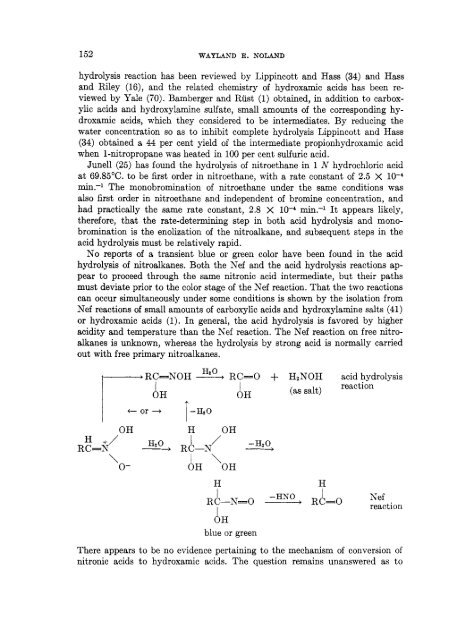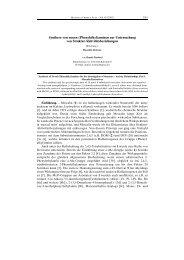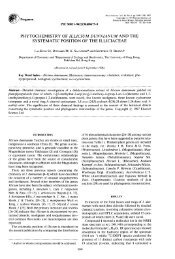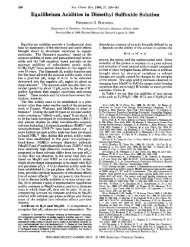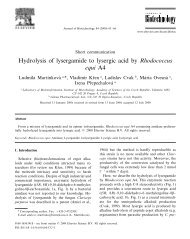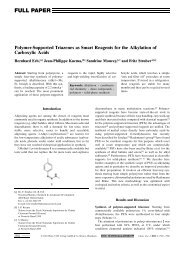Nef reaction
Nef reaction
Nef reaction
Create successful ePaper yourself
Turn your PDF publications into a flip-book with our unique Google optimized e-Paper software.
152 WAYLAND E. NOLAND<br />
hydrolysis <strong>reaction</strong> has been reviewed by Lippincott and Hass (34) and Hass<br />
and Riley (16), and the related chemistry of hydroxamic acids has been re-<br />
viewed by Yale (70). Bamberger and Rust (1) obtained, in addition to carbox-<br />
ylic acids and hydroxylamine sulfate, small amounts of the corresponding hy-<br />
droxamic acids, which they considered to be intermediates. By reducing the<br />
water concentration so as to inhibit complete hydrolysis Lippincott and Hass<br />
(34) obtained a 44 per cent yield of the intermediate propionhydroxamic acid<br />
when 1-nitropropane was heated in 100 per cent sulfuric acid.<br />
June11 (25) has found the hydrolysis of nitroethane in 1 N hydrochloric acid<br />
at 6935°C. to be first order in nitroethane, with a rate constant of 2.5 X lo-'<br />
min.-' The monobromination of nitroethane under the same conditions was<br />
also first order in nitroethane and independent of bromine concentration, and<br />
had practically the same rate constant, 2.8 X lo-& min.-l It appears likely,<br />
therefore, that the rate-determining step in both acid hydrolysis and mono-<br />
bromination is the enolization of the nitroalkane, and subsequent steps in the<br />
acid hydrolysis must be relatively rapid.<br />
No reports of a transient blue or green color have been found in the acid<br />
hydrolysis of nitroalkanes. Both the <strong>Nef</strong> and the acid hydrolysis <strong>reaction</strong>s ap-<br />
pear to proceed through the same nitronic acid intermediate, but their paths<br />
must deviate prior to the color stage of the <strong>Nef</strong> <strong>reaction</strong>. That the two <strong>reaction</strong>s<br />
can occur simultaneously under some conditions is shown by the isolation from<br />
<strong>Nef</strong> <strong>reaction</strong>s of small amounts of carboxylic acids and hydroxylamine salts (41)<br />
or hydroxamic acids (1). In general, the acid hydrolysis is favored by higher<br />
acidity and temperature than the <strong>Nef</strong> <strong>reaction</strong>. The <strong>Nef</strong> <strong>reaction</strong> on free nitro-<br />
alkanes is unknown, whereas the hydrolysis by strong acid is normally carried<br />
out with free primary nitroalkanes.<br />
H T/<br />
RC=K<br />
He 0<br />
RC-NOH -+ RC-0 + HtNOH acid hydrolysis<br />
<strong>reaction</strong><br />
bH OH I (as salt)<br />
I +or+<br />
\<br />
OH H OH<br />
-<br />
I /<br />
I \<br />
Hpo+ RC--N<br />
-HZ0<br />
-+<br />
0- OH OH<br />
H<br />
R&-N=O<br />
I<br />
OH<br />
blue or green<br />
-<br />
H<br />
-HNO I<br />
RC-0<br />
Kef<br />
<strong>reaction</strong><br />
There appears to be no evidence pertaining to the mechanism of conversion of<br />
nitronic acids to hydroxamic acids. The question remains unanswered as to


